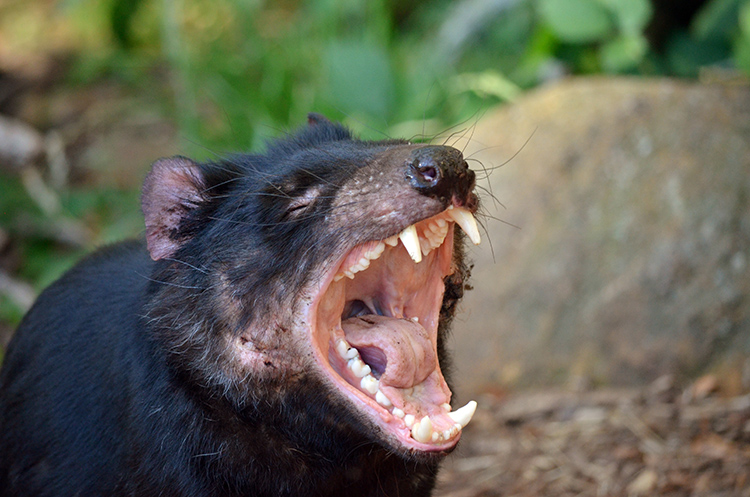Monster Monday: A Little Devil Is Still a Devil…
Monster Monday
December 28, 2015
At first glance, the Tasmanian devil does not appear very frightening. In fact, it looks somewhat like a misshapen teddy bear. When it opens its jaws, however, everyone can see how it got its name. This tiny mammal with its outsized personality is the top predator on the Australian island of Tasmania.
Adult Tasmanian devils measure about 3 feet (0.9 meter) long, including a tail of up to 1 foot (30 centimeters) in length. They have mostly black fur, with some white markings on the chest and rump. They also have short, muscular legs and a large head with big ears. Devils are the largest extant (still living) marsupial carnivores. They feed mostly on the remains of dead animals, but they also may kill and eat reptiles, birds, mammals, and other animals. They enjoy roadkill, but are themselves at risk of being killed by cars while feeding on it.
Tasmanian devils get their name from their fierce displays, which include harsh screeches and snarls and opening their mouths wide to show their sharp teeth. As if that isn’t enough, they produce a foul odor when they feel threatened. They are quick to threaten and attack any animal—including humans—that they find in their territory.
As marsupials, Tasmanian devils give birth to tiny, poorly developed offspring. In fact, up to 50 devils are born at one time, but only the first four that crawl to their mother’s pouch can survive. There, they feed on their mother’s milk for 15 weeks until they are finally large enough to survive outside the pouch.
The Tasmanian devil is suffering from a monstrous plague that is threatening it with extinction. In the 1990’s, a kind of cancer called devil facial tumor disease appeared in wild populations. As the name suggests, infected devils develop large tumors on their heads and necks, eventually making it impossible for them to eat. This cancer is unusual in its ability to spread through bites or close contact. Since devils often gather (and fight) to feed, the cancer quickly spread through Tasmania. As the catastrophe unfolds, many populations have been wiped off the island. Further funding and conservation efforts are needed to save one of Australia’s most memorable—and terrifying—animals.



